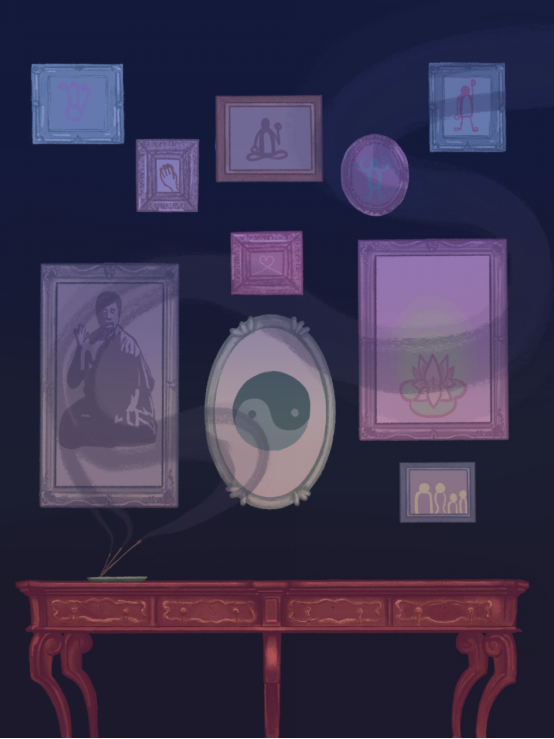
At the age of thirteen, in desperate need of a doctor, Jane was met only with reprimands for not meditating hard enough to heal her fever.
At the age of fifteen, half-conscious and body wracked with pain and vomiting, she was beaten for being too ill to meditate and study.
Jane’s good health would be attributed to meditation whenever she grew sick and recovered. She could cleanse herself of bad karma by suffering in sickness—medical attention was a violation of the karmic justice meted by the universe.
Jane would not see a doctor for the first time until she was eighteen.
Jane, whose name has been changed to maintain her anonymity, was raised in the spiritual tradition of Falun Gong. It is one of many new religious movements (NRMs) that emerged from the Qigong boom of late 20th century China. The PRC’s policy of state atheism had seen many traditional religions wiped out. Still, qigong was accepted because it was considered a form of Chinese medicine that used meditative exercises to refine one’s health. What distinguished Falun Gong among many other qigong movements was that its founder Li Hongzhi superimposed religious metaphysics upon the meditative exercises, claiming that it represented a continuation of a centuries-old tradition of spiritual salvation.
Because of their sizeable influence and local relevance, Falun Gong serves as an excellent case study of NRMs and the “dark side” of how many of them function in the contemporary world. In Jane’s experience with Falun Gong, she has come to believe that many NRMs function by inculcating extremist and isolating values in their adherents by promoting hyper-traditionalism, anti-science beliefs and comprehensive beliefs indoctrination. These values have grown only more radical in recent years due to mainstream society’s response of persecution and exclusion. Because of this, NRMs have strong connections to anti-vaccination and far-right movements, with Falun Gong specifically known for promulgating far-right views through funding extremist groups in America and Europe and through their media apparatuses, the Epoch Times and Shen Yun Performing Arts.
In levying a critique at the secularism and religious vacuum of modernity, Falun Gong has been able to, as Jane says, “hook people into the rest of their reactionary ideology”. It begins by manufacturing a connection to ages-old traditions, representing a “true” connection to the premodern past. From this, Falun Gong is able to establish a rejection of modern ideals of social progress and liberalism within its adherents. Falun Gong doctrine denounces homosexuality and race-mixing as a deviation from tradition. In telling me of a Shen Yun show, Jane described how performances would employ left-wing imagery in depictions of the villains, such as rallying against figures like Karl Marx or symbols like the hammer and sickle. Then, there is the Epoch Times, whose following has only grown more considerable through social media, particularly following an endorsement by President Donald Trump.
“Initially, a lot of Epoch Times’ stuff was feel-good stories,” says Jane. “But as they grew more popular, it became very explicitly far-right propaganda.”
Only serving to consolidate the reactionary propaganda is the tendency of some NRMs to denounce modern science.
“Science and medicine are the evil of society and have brought us away from traditional values” is the claim from those around Jane. This, of course, guided the decision to forbid her from receiving medical attention. In recent years, such rejection of modern medicine has only grown more dangerous due to the rise of COVID-19 and the anti-vaccination movement which has arisen in response. PolitiFact has even noted that the Epoch Times specifically has been one of the primary culprits in perpetuating anti-vaccination misinformation.
What this all contributes to is the development of absolute dogma within many adherents.
“I once asked my parents if there was anything that Falun Gong or Li Hongzhi could do to make them not believe it, and they firmly said no. They couldn’t even entertain that thought,” says Jane.
In fact, in explaining their decision to remain anonymous, Jane informed me that “practitioners firmly believe saying anything bu jing, which basically means anything blasphemous against Falun Gong or Li Hongzhi, is dangerous and evil.”
In promoting isolating and reactionary beliefs within followers, NRMs can instill them with a conception of mainstream society that sees it as wholly immoral and degenerate. This is only further enabled by the manner of people which NRMs appeal to.
“I know that when my parents found Falun Gong, they were incredibly vulnerable. That seems to be the kind of people that Falun Gong goes after: people who are sick and suffering.”
As our talks came to a close, Jane left me with one final important sentiment: “Falun Gong members are genuinely not evil. They’re normal people who have been indoctrinated into extremism.”
This fact is so important to keep in mind when discussing religious extremism, for it is only through an understanding of how faith operates within contemporary society that the issue can be resolved. The goal here has not been to vilify or lampoon but to develop an awareness of the capacity that fanaticism within NRMs has to hurt people through one’s actual experience. NRMs appear to be on the rise, and many are reconcilable with a life of tolerance and health. However, such alternative spirituality certainly has the potential to radicalise its followers, particularly when they are subject to marginalisation from mainstream society. As such, it is vital that the future sees us take NRMs seriously and the power they have to both uplift and oppress.
Source: https://farragomagazine.com/news/article/farrago/The-Dark-Side-of-New-Religious-Movements/